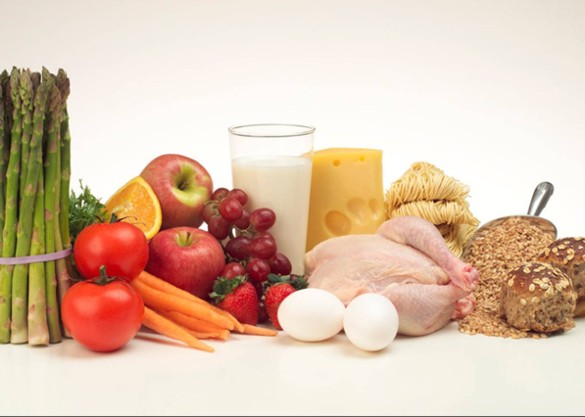 Photo courtesy of the Oklahoma State Government.
Photo courtesy of the Oklahoma State Government.
NEW YORK- While we’ve been largely habituated to think about food only as far as what it can do for our taste buds - and don’t get me wrong, I won’t eat anything I find unappealing either - we also need to become more conscious of what food does for our bodies.
We generally know that all unprocessed or at least minimally-processed foods are good for us, especially organics if your budget allows, but different foods have particular properties that are especially significant to specific parts of our human biology.
Researchers have found that Vitamins A, C, E, and Bs are all excellent for promoting healthy skin from the cellular-level as well as performing other vital functions in the body. This article will discuss what each vitamin does, and what foods it can be found in. Some foods as you will see, contain a combination of these vitamins.
Vitamin A
Functions - helps skin develop and stay healthy, as well as promotes the growth of bones and teeth. It plays an important role in cell growth, vision, and the immune system. It is present in the retina and aids vision in low light. It also helps maintain the mucous membranes that trap microbes and fight infection.
Food Sources - orange vegetables, such as carrots, squash, and sweet potatoes, as well as in broccoli, spinach, and other dark green, leafy vegetables. In animal form, vitamin A is found in milk, butter, cheese, eggs, liver, and fish.
Vitamin C (Ascorbic Acid)
Functions - important in the formation and repair of bones, teeth, and collagen - a substance in the skin, muscles, blood vessels, and other tissues. Vitamin C helps heal wounds and also helps the body absorb iron from plant foods.
Food Sources - include citrus fruits, strawberries, cantaloupe, pineapple, and guava. Good vegetable sources are broccoli, brussels sprouts, tomatoes, spinach, kale, green peppers, cabbage, and turnips.
Vitamin E
Functions - acts as an antioxidant, which is a type of molecule that neutralizes harmful compounds called free radicals that damage living cells and spoil food. It plays a role in the forming of red blood cells, and also has powerful anti-inflammatory functions.
Food Sources - vegetable oils, margarine, wheat germ, whole grains, nuts, and leafy green vegetables.
Vitamin B2, or Riboflavin,
Functions - involved in metabolism. In addition to metabolizing carbohydrates, fats, and protein, it helps maintain the mucous membranes of the respiratory system. Signs of riboflavin deficiency generally appear in the skin and eyes. Cracks or open sores may develop on the skin, especially around the lips or nostrils. The eyes may become red, itchy, and sensitive to light.
Food Sources - liver, milk and dairy products, as well as fish, dark green leafy vegetables, and whole or enriched grains and cereals.
Vitamin B3, (Niacin and Nicotinic Acid)
Functions - helps the proper functioning of the digestive system, nervous system, and skin. Researchers also have found that niacin acts on cholesterol levels in the blood, raising levels of high-density lipoproteins (HDLs, or the so-called good cholesterol) and lowering levels of low-density lipoproteins (LDLs, or “bad” cholesterol).
Food Sources - The best sources of niacin are protein-rich foods such as liver, poultry, meat, and fish and seafood. It is also found in whole or enriched grains and cereals, legumes, and nuts.
Vitamin B6
Functions - necessary for the absorption and metabolism of carbohydrates and protein. It also plays roles in the use of fats in the body; in the formation of red blood cells; and in the functioning of nerve and muscle cells, and the immune system. Vitamin B6 deficiency affects the skin and mucous membranes, causing itching, inflammation, and sores (resembling the symptoms of riboflavin and niacin deficiencies).
Food Sources - whole grains and cereals, such as brown rice and oatmeal, pork, chicken (white meat), avocadoes, spinach, beans, potatoes, peanut butter, and bananas.
References
- “Vitamin,” Microsoft® Encarta® Online Encyclopedia 2008; http://encarta.msn.com © 1997-2008 Microsoft Corporation. All Rights Reserved.
- “Human Nutrition,” Microsoft® Encarta® Online Encyclopedia 2008; http://encarta.msn.com © 1997-2008 Microsoft Corporation. All Rights Reserved.
- SuperFoods- Fourteen Foods That Will Change Your Life; Steven G. Pratt, M.D., and Kathy Mathews